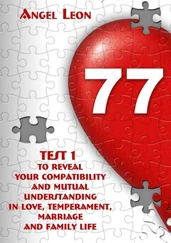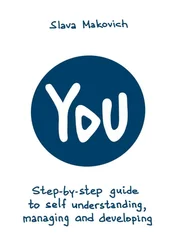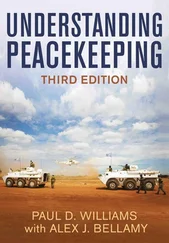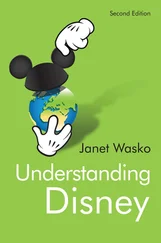In contrast, sexual attraction refers to the “sexual” or lust lure for others. It also might be termed one’s “sexual orientation.” Sex researchers, particularly those with a psychological bent, believe that sexual attraction to others is the sine qua non of sexual orientation. So, for example, if you are a woman and primarily lust after—in other words, are turned on by being with, looking at, thinking about, or fantasizing about—men, then you have a heterosexual sexual orientation. Thus, you are sexually attracted to, or have sexual orientation toward, men.
The distinction between romantic and sexual attraction extends even further. As introduced in chapter 1, some biologists and social scientists have suggested that romantic and sexual processes are potentially independent, governed by different brain systems, and evolved from different processes (Diamond, 2003b; Fisher, 2004). Key aspects of romantic functioning (e.g., affectional bonding) may have evolved relatively recently in our evolutionary history from the attachment system (Hazan & Shaver, 1987), whereas sexual desire/attraction processes may have evolved from very basic mating and sexual attraction systems. The basic mating system is much older, evolutionarily (or phylogenetically) speaking, than the attachment system. Reptilian brains are, after all, geared for sex, not for love. [3] An interesting exception was pointed out to me when I was visiting a crocodile farm in Northern Territory, Australia. The caretakers noted a rare case of a male and female crocodile that seemed to have developed an affinity for one another and, unlike all the other animals there, preferred to be caged together. They also slept on top of one another like love-obsessed newlyweds. Surprised that love would emerge in such an unnatural context, it made me wonder, a bit tongue in cheek, whether human love is partly a function of being in captivity.
There is a relatively famous Seinfeld episode—and aren’t almost all of the episodes famous now?—in which the main character, Jerry, develops a romantic, but not a sexual, crush on a major league baseball player he meets (Keith Hernandez). The humor of the episode emerges from the fact that Jerry begins to behave toward Keith as he might toward a female romantic partner (e.g., infatuation, jealousy, feeling spurned). The episode illustrates how humans have the capacity to decouple romantic from sexual attraction. It also illustrates that one’s romantic inclination (e.g., to a man) may, in fact, be in contrast to one’s typical sexual orientation (e.g., to women).
This distinction between romantic and sexual attraction may seem clear, but the two kinds of attraction are, as most people realize, also intricately related, and they often overlap. After all—Jerry’s romantic fling with Keith Hernandez notwithstanding—one’s romantic attractions (e.g., to men) are usually the same as one’s sexual attractions (e.g., to men). So, if I lust after Bob, I very well may also have romantic feelings for him; indeed, I may even love him. This is partly because these two attraction processes influence one another, so a sexual infatuation may ultimately turn into a romantic bond lasting a lifetime, and a romantic bond may lead to sexual attraction. Lisa Diamond (2003b) suggests that this latter sequence—love followed by lust—is more likely to occur in women than in men.
You may be thinking, The complex relationship between romantic and sexual attraction is interesting, but what does it have to do with asexuality? Well, nearly everything, actually. One of the main definitions of asexuality is a lack of sexual attraction . In the first study examining asexuality in a large national sample, which I conducted in 2004, asexuality was defined as never having felt sexual attraction to men, women, or both (Bogaert, 2004; Bogaert, 2006b). AVEN (Asexuality Visibility and Education Network), the largest website devoted to asexual issues, also defines asexuality as a lack of sexual attraction. So, many asexual people have no sexual attraction to others, meaning that there is no “lust lure” for others. [4] For someone to be considered asexual, I think the lack of sexual attraction should have endured over a long period of time. For example, in my original study, a person was defined as asexual if he or she never had sexual attraction to others. Thus, like a heterosexual or homosexual orientation, which implies enduring level of attraction to others, there should be some level of persistence to one’s lack of sexual attractions if one has an asexual orientation.
Does this mean that asexual people are not romantically attracted to others? The answer to this question—“not necessarily”—should be clear, given our discussion of the distinction between romantic and sexual attraction, and the fact that they can be decoupled. As mentioned in chapter 1, a lack of sexual attraction is not the same as a lack of romantic attraction, and asexual is not synonymous with aromantic . Some asexual people demonstrate that you can have one without the other. So, if one defines asexuality as a lack of sexual attraction to others, one should also be aware that it is not necessarily defined as a lack of romantic attraction to others. As also mentioned in the opening chapter, asexuality allows us to understand sexuality, and the distinction between romantic and sexual attraction is a good example of this. Sex and romance are often linked, but not inextricably so.
I often get media requests a few weeks before Valentine’s Day to discuss sexuality research. A discussion of human sexuality makes for an interesting news story, generally speaking, but it is pure gold on February 14. In early February 2010, I had a slew of reporters asking about the distinction between romantic and sexual attraction, and how it relates to asexuality. Can there be love without sex? And vice versa? For some reason, that year the media requests were all from Spanish-speaking countries—Spain, naturally, and a number from South America. I did one telephone interview for a national radio show in Colombia, using a translator. I was asked whether the decoupling of sex from love was a modern phenomenon. I suggested that, although it is not a new phenomenon, its manifestation (or how this decoupling plays itself out in human behavior) may take different forms, depending on the time period and the culture. As an example, I explained the relatively modern Western trend of people hooking up and maintaining “sex-only” relationships. To describe this trend, I used the rather indelicate but often-heard phrase fuck buddies . The interview ended very quickly after that, my assumption that this broadcast was not a live one (and thus could be edited, if deemed necessary) being, evidently, incorrect.
The distinction between romantic and sexual attraction is important, but its full implication is not recognized. For example, some definitions of sexual orientations not only include a sexual attraction component but also a romantic (or equivalent) one. Take the well-used textbook on sexuality, Understanding Human Sexuality (Hyde, DeLamater, & Byers, 2009). This text defines sexual orientation as a “person’s erotic and emotional orientation towards members of his or her own gender or members of the other gender” (p. 431). This definition goes beyond “erotic” or what would be termed “sexual” attraction and includes an emotional component, suggesting that romantic attachments are important to how we define a sexual orientation. In some sense, this type of definition is a broad description for one’s “gender” orientation for love, sex, or both. And it is true, as mentioned above, that romantic and erotic attachments are often closely linked. But including an emotional/romantic element in the definition is also problematic, because (as mentioned above) these types of attraction are separate phenomena, and some people don’t have sexual inclinations that match their romantic inclinations.
Читать дальше












